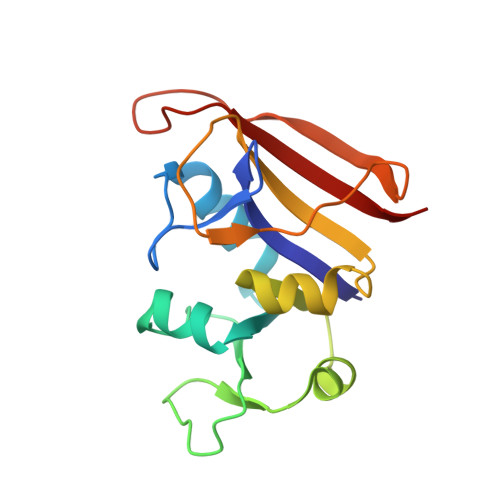Structure-Guided In Vitro to In Vivo Pharmacokinetic Optimization of Propargyl-Linked Antifolates.
Lombardo, M.N., G-Dayanandan, N., Keshipeddy, S., Zhou, W., Si, D., Reeve, S.M., Alverson, J., Barney, P., Walker, L., Hoody, J., Priestley, N.D., Obach, R.S., Wright, D.L.(2019) Drug Metab Dispos 47: 995-1003
- PubMed: 31201212
- DOI: https://doi.org/10.1124/dmd.119.086504
- Primary Citation of Related Structures:
6ND2 - PubMed Abstract:
Pharmacokinetic/pharmacodynamic properties are strongly correlated with the in vivo efficacy of antibiotics. Propargyl-linked antifolates, a novel class of antibiotics, demonstrate potent antibacterial activity against both Gram-positive and Gram-negative pathogenic bacteria, including multidrug-resistant Staphylococcus aureus Here, we report our efforts to optimize the pharmacokinetic profile of this class to best match the established pharmacodynamic properties. High-resolution crystal structures were used in combination with in vitro pharmacokinetic models to design compounds that not only are metabolically stable in vivo but also retain potent antibacterial activity. The initial lead compound was prone to both N -oxidation and demethylation, which resulted in an abbreviated in vivo half-life (∼20 minutes) in mice. Stability of leads toward mouse liver microsomes was primarily used to guide medicinal chemistry efforts so robust efficacy could be demonstrated in a mouse disease model. Structure-based drug design guided mitigation of N -oxide formation through substitutions of sterically demanding groups adjacent to the pyridyl nitrogen. Additionally, deuterium and fluorine substitutions were evaluated for their effect on the rate of oxidative demethylation. The resulting compound was characterized and demonstrated to have a low projected clearance in humans with limited potential for drug-drug interactions as predicted by cytochrome P450 inhibition as well as an in vivo exposure profile that optimizes the potential for bactericidal activity, highlighting how structural data, merged with substitutions to introduce metabolic stability, are a powerful approach to drug design.
- Department of Pharmaceutical Sciences, University of Connecticut, Storrs, Connecticut (M.N.L., N.G.-D., S.K., W.Z., D.S., S.M.R., D.L.W.); Pfizer Worldwide Research & Development, Pharmacokinetics, Dynamics, and Metabolism, Groton, Connecticut (R.S.O.); and Department of Chemistry and Biochemistry, University of Montana, Missoula, Montana (J.A., P.B., L.W., J.H., N.D.P.).
Organizational Affiliation:



















